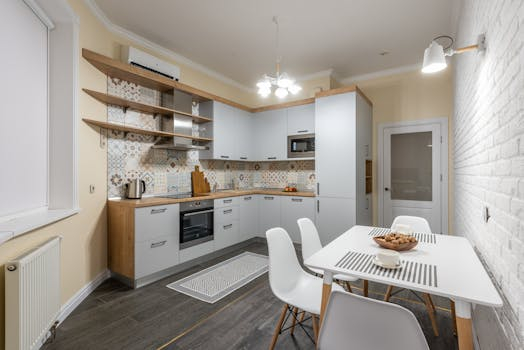Predictive Power: Home Design will Revert back to the 20’s
As we approach the end of the decade, one thing is becoming clear in the world of home design – nostalgia is taking over. We are seeing a resurgence of iconic design elements from the 1920s, also known as the “Roaring Twenties”, making their way back into modern homes. From Art Deco accents to geometric patterns, the 2020s are shaping up to be a decade of trends from the past. This may come as a surprise to some, but the rise of predictive power in home design has made it possible to forecast the return of these retro styles. In this article, we will explore the growing influence of predictive power on home design and how it is leading us back to the 20s.
The Rise of Predictive Power in Home Design
With the rapid advancement of technology, home design has become more accessible and personalized than ever. Advancements in Artificial Intelligence (AI) and Machine Learning (ML) have enabled designers to predict trends and consumer preferences with great accuracy. This has given them the ability to cater to individual tastes and preferences, making home design a truly personalized experience.
One of the key factors driving the rise of predictive power in home design is the availability of vast amounts of data. With the help of data analytics, designers can now break down consumer behavior and preferences to a granular level. This includes everything from color preferences to purchasing habits. By analyzing this data, predictive models can forecast upcoming trends and help designers create spaces that resonate with consumers.
The Predictive Power of Nostalgia
While predictive power has helped designers stay ahead of the curve, it has also brought back elements of the past. Nostalgia, which refers to a longing for the past, has always influenced art and design. In recent years, nostalgia has been a recurring trend in various industries, including fashion and home design. Many attribute this to the current state of the world, where people are seeking comfort in familiar and simpler times.
The home design industry has not been immune to this trend, with many homeowners looking to add a touch of nostalgia to their spaces. This can range from incorporating vintage furniture pieces to using retro-inspired patterns and materials. With the help of predictive models, designers have been able to accurately anticipate this shift towards nostalgia and incorporate it into their designs.
The Return of the 20s in Home Design
As we enter the 2020s, we are witnessing a significant shift in home design, with trends from the 1920s making a comeback. The 20s were a time of glamour and indulgence, filled with Art Deco architecture, bold geometric patterns, and luxurious materials. These elements are now making their way back into modern homes, adding a touch of elegance and sophistication.
One of the most notable design trends from the 20s making a comeback is the use of Art Deco accents. Art Deco is a style characterized by its bold, geometric designs and lavish materials such as brass and marble. These elements can be seen in furniture pieces, lighting fixtures, and even architecture. Another prevalent trend from the 20s making a comeback is the use of bold colors, such as emerald green and electric blue. These colors add a pop of vibrancy to spaces and are often paired with gold accents to create a luxurious feel.
The Influence of Technology on Retro Design Trends
While it may seem ironic that advancements in technology are leading us back to the past, the truth is, technology has played a significant role in reviving these retro trends. With the help of 3D rendering software and virtual reality, designers can accurately recreate and modernize retro designs. This has made it easier for homeowners to visualize and incorporate these trends into their spaces.
The Future of Home Design and Predictive Power
The influence of predictive power in home design shows no signs of slowing down. With the continuous advancements in AI and data analytics, designers will have access to even more precise forecasting tools. This will give them the ability to create customized spaces that appeal to individual tastes while also staying ahead of trends.
As for the future of home design, only time will tell what trends will emerge. But one thing is certain – predictive power will continue to shape and influence home design for years to come. So, if you’re a fan of the 20s, get ready to see more of it in your home. And for those looking for a personalized and nostalgic touch in their living spaces, now is the time to embrace the power of prediction.







